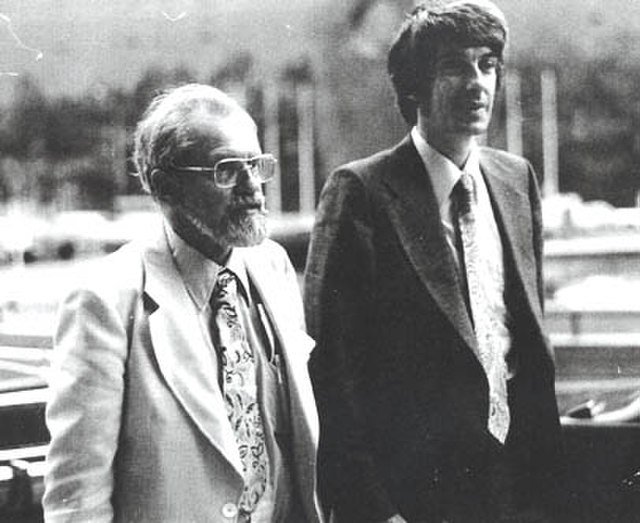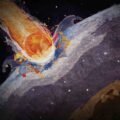Jacques Vallée is a diversified investor with technology startups and author of several textbooks on computer networking who has maintained a long-term interest in unidentified aerial phenomena (UAP). The author’s opinions are his own and do not necessarily reflect those of The Debrief or its editorial staff.
When Congress reconvened last year on September 6, attention was on a busy legislative agenda, and renewed commitments to the country’s defense posture in Europe and the Pacific in response to global economic and military challenges. However, many Americans were also watching for developments involving the matter of unidentified aerial phenomena (UAP). The imagery of unknown objects flitting at crazy speeds over the Pacific and Atlantic coasts, unveiled in late 2017, is still too vivid in the country’s memory to be easily forgotten.
Ten years earlier, I had seen those images when I joined the scientific team assembled by the Bigelow Aerospace Advanced Space Studies (BAASS) organization of Robert Bigelow. We had early (but classified) access to such images and the mystery they represented. As the public now knows, our team went on to investigate many other incidents where the limits of science and technology were tested. In the process, it produced a series of reports, still controversial and partially withheld, about developments in science that might approximate the observed performance of the objects, albeit without explaining them to the full satisfaction of the academic community.
In support of these research ambitions in physics and biology, a more discrete team of programmers, coders, information analysts, and field investigators was recruited. They worked very hard for two years to implement the first level of CAPELLA, a system of data “warehouses” I had designed to enable the investigation of global patterns behind the phenomenon. Our team included translators from Spanish, Russian, French, and other languages who would generate the first comprehensive survey of information data elements about UAP. It was the first step of a three-stage process I engineered, aimed at supporting a realistic AI-driven investigation of the phenomenon in its global manifestations.


The accumulated data, a repertoire of roughly 260,000 reports over 70 years, represents the high-water mark in a field that has long been chided as fragmentary, unstructured, poorly reported, and generally unsuited to the scientific approach. I have argued that the secret was in the structure, not in any single case or cluster of incidents, whether kept confidential or not. CAPELLA, to my knowledge, remains classified on account of the reasonable argument that unsupervised release would expose medical records, private lives, and proprietary industrial data in violation of a blizzard of legal challenges.
Congress should care about protecting sensitive personal data in the accumulated database. However, future efforts would be able to sanitize those personal records and enable higher levels of analysis by granting wider access to the collected information. Yet the abrupt termination of the BAASS project and its complicated aftermath have scattered the team and compromised such potentials. Once within reach, the global scientific assessment of the phenomenon (Threat or opportunity? Cosmic or local? Physical or evanescent? Material or meta-material?) has been postponed.
It may be revived at some point as part of other programs. Still, any rushed AI approach in the absence of detailed data cleansing could potentially mislead the best supercomputers and perhaps also bewilder their attendants. The real secret lies in the software: AI systems that work well in the aerospace industry, finance, or defense analysis, where terms can be strictly defined, are by comparison unsuited to decipher a body of long-neglected anomalous data that could possibly even be driven by non-human intelligence.
Washington’s reaction to the partial unveiling of the controversial facts about UAP has been complex, and it may become messy when new corners of the carpet are lifted. To independent investigators like me, watching it all unfold is fascinating. Attention has concentrated on the Pentagon, in response to the assumption that the phenomenon could be a threat. Simple statistics teach us otherwise: less than 10% of the cases included in the CAPELLA database involved the military. Even there, the great majority of the interactions with observers cause no harm. A small number of them do, however, under conditions that could be interpreted to suggest localized hostility, but that critical area of study has also been mostly neglected.
The defunct BAASS project was viewed as part of AATIP, an unclassified nickname once attributed to another aborted program called the Advanced Aerospace Weapons System Application Program (AAWSAP). After AAWSAP ended, frustrated analysts continued work on their own time with no full-time personnel or funding. What followed was more structured, but equally strange, generating its own litany of acronyms: the old “UFO” was first replaced by “UAP” in DoD parlance but also referred to as “AAV” (for “Advanced Atmospheric Vehicles”) and more recently “Unidentified aerospace-undersea phenomena,” reflecting persistent executive confusion. First, there was a “UAP Task Force” (UAPTF), and now we have the better-structured “All-domain Anomaly Resolution Office,” or “AARO” (although why not call it “ADARO,” so that everybody can remember it—and pronounce it?). And while the Intelligence Authorization Act of 2021 was the first to request a formal report on UAP, it didn’t address the development of the phenomenon since the days of the Roswell crash (as language in the FY 2023 NDAA does), or the fast-changing realities of scientific knowledge about it.


There is a more promising approach to the entire conundrum, if you take a quiet, careful look at the best-observed cases in the historical files; the kind of study Paola Harris, an international journalist and longtime investigator undertook years ago in New Mexico, where I joined her. Both of us had worked closely with Professor J. Allen Hynek in the days of Project Blue Book and we remained dedicated to a global study of the phenomenon: the kind of work that could help provide a logical scientific guide to public policy.
A series of observations that began with the controlled crash of an object on 16 August 1945, one month after the first nuclear bomb explosion at the Trinity site in New Mexico, is a case in point. Arguably the starting incident in the modern development of the phenomenon, the event was first reported by a bomber pilot on his way to a landing at Alamogordo who described how a communication tower had been damaged when hit by the object, and some fire that burned in the brush surrounding an oval craft the size of two trucks. A pair of local kids on horseback were seen close to the site.
Noting that this event happened just two days after the capitulation of Japan, Paola Harris was the first investigator who interviewed both of the “kids,” now old men, when they finally agreed to describe their experience some 65 years after the event. The Army had removed the object under extraordinary conditions that Paola and I describe in our book Trinity: The Best-kept Secret, but no word had filtered from the Atomic Energy Commission, successor to the Manhattan Project, which possessed its own secrecy scheme; everyone kept the incident private. As the late Senator Harry Reid observed of the UAP issue a few years before his death, “much of the evidence hasn’t seen the light of day.”
As recently discussed in The New York Times, the Trinity incident happened two years before Roswell, before the US Air force was created, and before the term “flying saucers” was invented. Our investigation continues, with the assistance of the surviving witness and other individuals who lived through its aftermath, but the most important scientific aspect is found in the patterns that emerge when one takes a wider analytical look.
In Trinity, we discuss two other important, thoroughly-researched incidents where an object landed and left specific physical traces that have essentially the same attributes as the Trinity case. One took place on April 24, 1964, at Socorro, New Mexico, some eight miles due north of the location of the 1945 incident, when police officer Lonnie Zamora saw a metallic craft and its occupants in an open desert area south of town. The object was oval, similar to the Trinity “avocado,” and two short occupants with human features stood next to it. The case, which left traces and materials, was investigated by local police, the Air Force, Army experts, and informally by FBI agents in the town working on unrelated business. As a young computer scientist in Chicago at the time of the Socorro incident, I followed the case hour-by-hour, and assisted Dr. Hynek in his investigation and further analysis.


A later incident, in which I was involved through the French Space Agency (CNES) committee concerned with UAP sightings in France, took place near Valensole on April 1, 1965. Again, the craft was oval (sorry, no “saucers!”), and two short beings with human features stood next to it. They left the witness paralyzed as the object lifted, dashed up in the sky, and vanished in mid-air.
None of these incidents involved a disk-shaped object. None of them displayed hostility. None left a trail or residue of propellant. In all three cases, the living entities were short, had human features, and breathed our air. In all three cases, a thorough investigation was conducted by national agencies. White Sands Command, the local police, and by the U.S. Air Force separately investigated the Socorro case. It remained unidentified. The Valensole case was investigated by five different agencies of the French government, and it, too, remains unidentified. All three cases left deep material imprints and physical data. None implied physical harm or a threat, except for the temporary incapacitation of the French witness.
As details from the three cases of Trinity, Socorro, and Valensole help demonstrate, the future in this critical field of research resides in the careful investigation of physical and biological patterns over large, unclassified, internationally curated data repositories, not solely in the incidental military data, as seductive as these highly classified records may look to us from the outside.
Public policy would benefit from a review of well-investigated cases that can inform further research. Congress can appeal to the scientific community at large, beyond the types of historical constraints that have hidden or distorted the best data on UAP. Doing so has the potential of finally bringing the challenge UAP represents out of the shadows, and into the light of day.
Jacques Vallée is a principal at Documatica Financial and a diversified investor with technology startups in space development and information management. He is the author of several textbooks on computer networking and has maintained a decades-long interest in the scientific study of unidentified aerial phenomena. He divides his time between San Francisco and Paris, and can be found online at his website.

